The Galbraith House
Robert and Helen Savard Galbraith
845 North Allen Street
1947
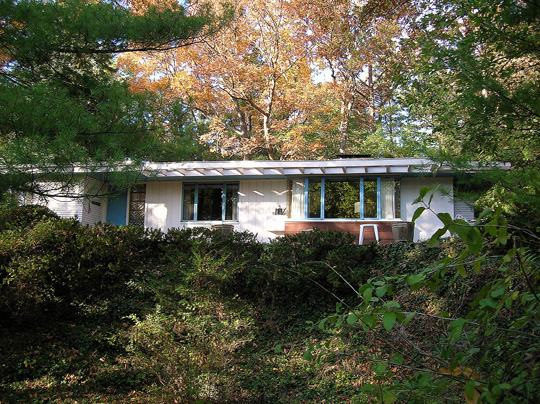
Robert Galbraith was a professor in the Department of English at Penn State, but was best known as the University’s popular, longtime swimming coach. Helen Savard was a professor in interior design in the old College of Home Economics. Phil was a (most likely outstanding) student in her class. When the couple married, they approached him in his newly opened downtown State College office about designing a house for them. They were his first local clients.
It’s good that Phil loved challenging sites, for the location they selected at the end of North Allen Street was an abandoned stone quarry, with a large pit in the front of the property. Phil’s solution was to position the house on a high ledge behind the pit The couple chose to let the property remain in its wild state, providing a dramatic setting for the house.
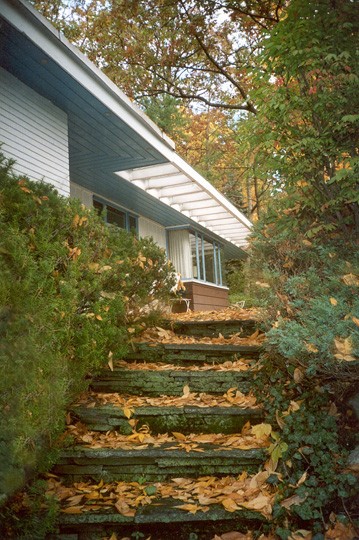
Approaching the front of the house, there is a long flight of stone steps, made with stone pried from the site.
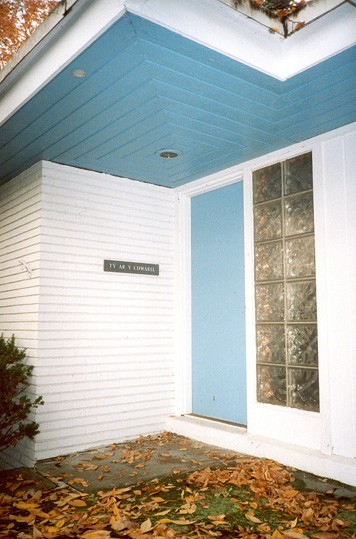
On arrival at the top of the stairs, visitors find themselves at the front door. Hallock’s pattern of squares is found in the glass tile to the right of the door. Note the patterned fascia above the door. The inscription on the plaque (in Welsh) reads “House on the Quarry.”
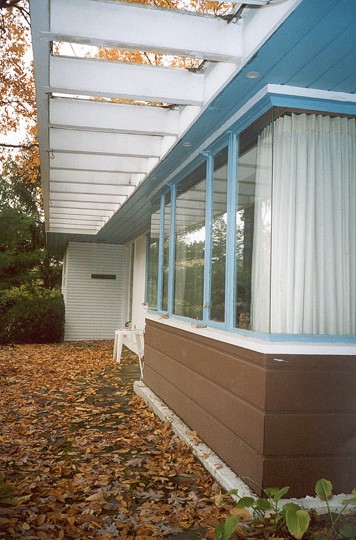
The terrace continues around the house to the south in a reverse J-shape, connecting the front and back doors. Phil loved the frameless corner glass windows pioneered at Wright’s Fallingwater and used them profusely in the house. A band of picture windows continues in the opposite direction to the laundry room.
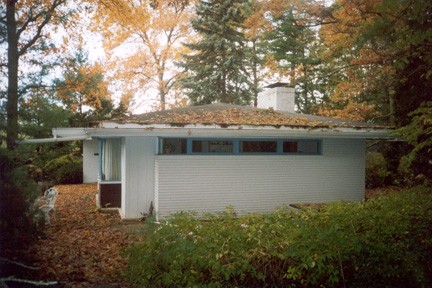
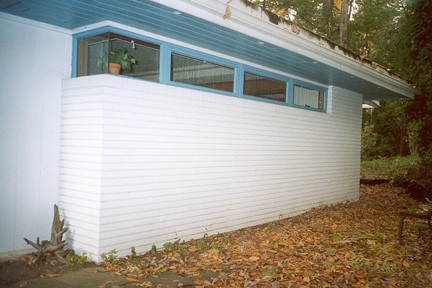
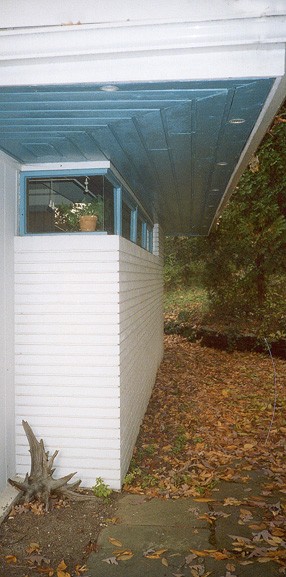
Three views are shown of the south of the house. A high band of windows allows wall space in the living room for greater flexibility in the placement of furniture, as well as adding visual interest. Throughout, notice that the mortar in the bricks is flush vertically but grooved horizontally, emphasizing the horizontal lines of the structure. This was also a technique pioneered by Wright.
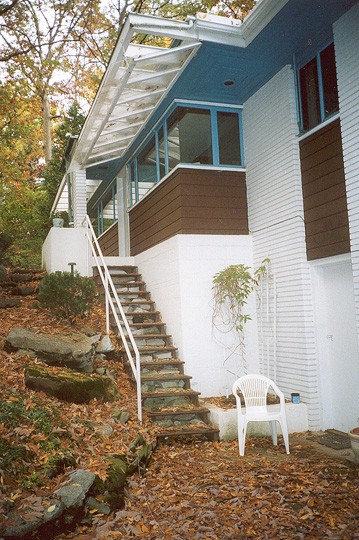
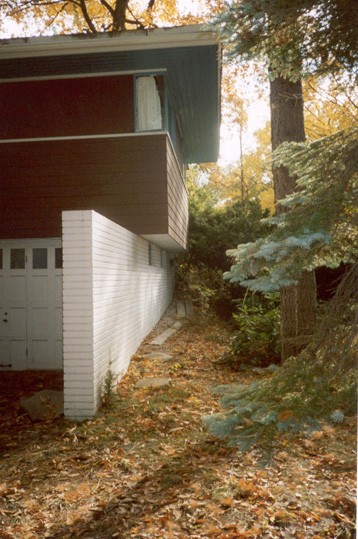
Adapting to the site, the house is perched on a high rock ledge necessitating a long flight of stairs from the lower level. Perhaps even worse, the plan required the stairs to be on the exterior, although there was room for a garage under the north part of the house. Notice the glass awning that is used to protect the stairs from the weather, but allows a view from the kitchen window. The wing wall to the right is another fairly common Hallock trademark, enhancing the size of the house on the approach from the driveway.
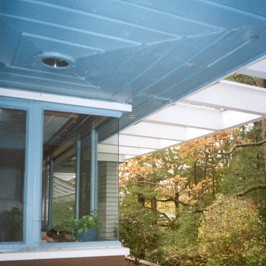
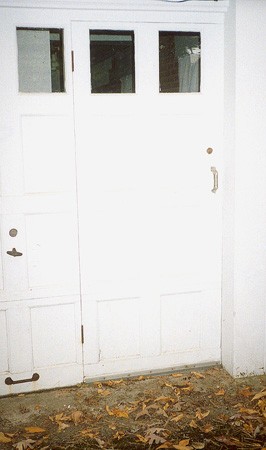
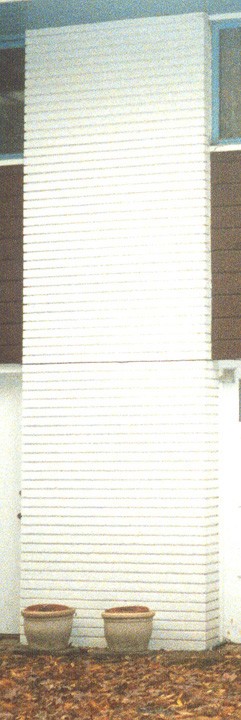
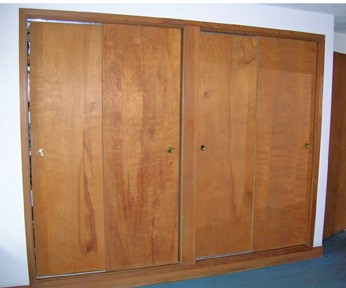
Natural wood sliding doors line a wall of the master bedroom.
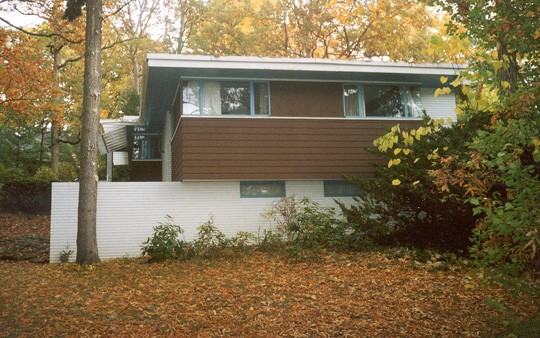
Bedrooms are on the north side of the house; each has its own frameless window.
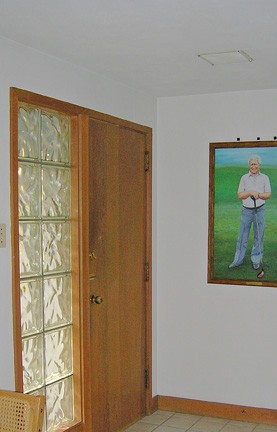
The front door opens into a small foyer. A hall straight ahead leads to the bath and two bedrooms. To the right is the dining room.
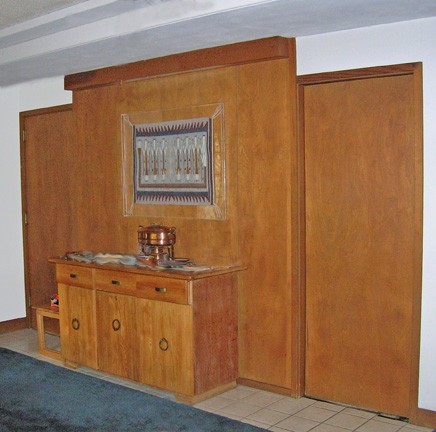
The east wall of the dining area is paneled and flanked with matching doors. The swinging door to the right leads to the kitchen. The door to the left opens to a closet. Helen wanted the doors to match exactly, so Phil specified a latch on the left door which releases when lightly pushed. A concealed fixture lights the artwork and buffet.

Unlike most of Hallock’s later houses, the hearth on the Galbraith fireplace was not raised. Note the double tray ceiling, currently a very popular feature on new deluxe houses.
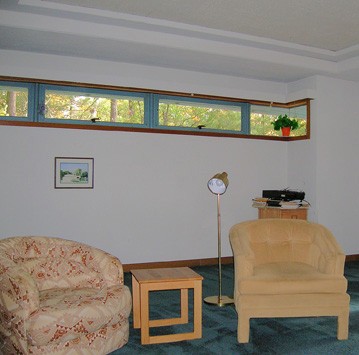
The south wall of the living room has a row of clerestory windows with a frameless corner window. The dwelling is noteworthy for the latter, which appear on all sides of the house.
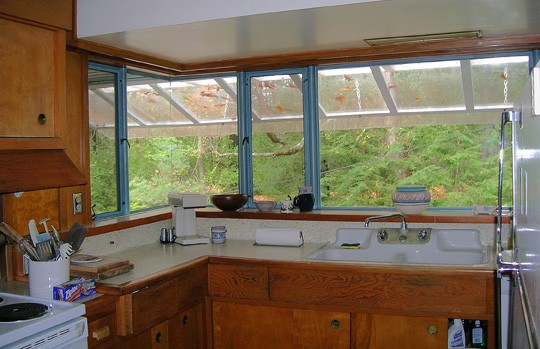
At the main work area of the kitchen, one feels as if miles away from town rather than just a few blocks from the Penn State campus. It would certainly be a bird watcher’s paradise. Probably due to Helen’s preference, sliding doors were used for the cabinets rather than the traditional pull-out ones.
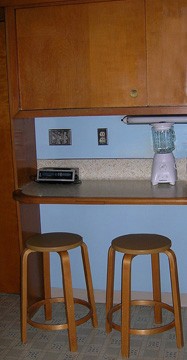
The design included a built-in counter for meal planning, breakfast, or other light meals. Sliding door cabinets are above. The natural wood of the cabinets matches that used throughout the house. The swinging door to the formal dining area is to the left.
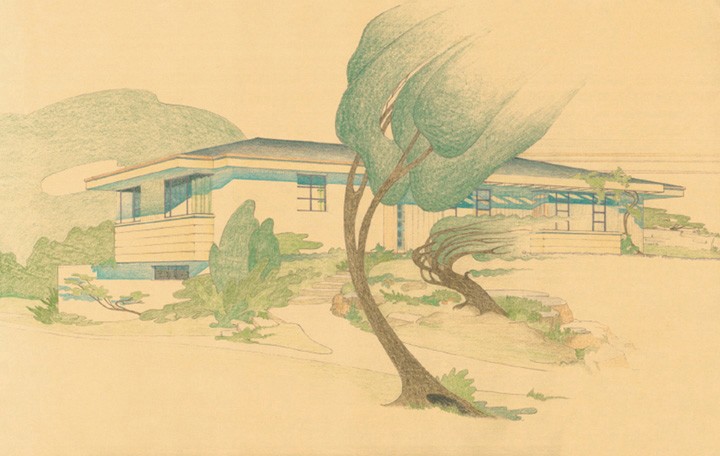
Phil’s preliminary sketch for the house is shown.
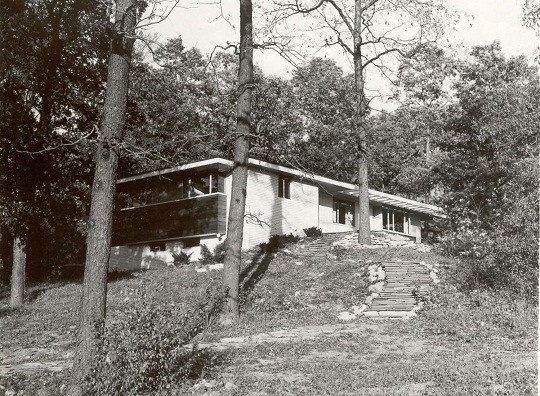
Photo is soon after the house was constructed; stair stone was pried from the site.